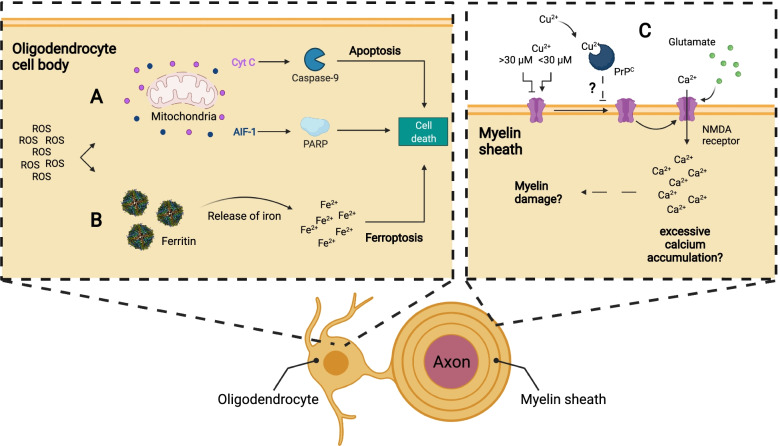Fig. 2.
Various oligodendrocyte intrinsic mechanisms could lead to cell death of the oligodendrocyte during cuprizone intoxication. A Elevated levels of ROS can lead to permeabilization of mitochondria and subsequent release of cytochrome C and apoptosis-inducing factor-1. Cytosolic cyt c can activate caspase-9 and thus induce apoptosis in the oligodendrocyte, while apoptosis-inducing factor leads to cell death through PARP. B ROS reduces iron stored in ferritin from Fe3+ to Fe2+, which leads to iron release from ferritin. Free Fe2+ and ROS can induce lipid peroxidation, a hallmark of ferroptotic cell death. C Glutamate may reach toxic levels and act via NMDA receptors to permit excessive Ca2 influx. NMDA receptor activity can be modulated by copper. Depending on the concentration of copper present, NMDA receptor channel function is enhanced or inhibited. Also, PrPC can inhibit the NMDA receptor in the presence of copper. Elevated levels of glutamate and changes to copper concentration in the brain as a result of cuprizone administration therefore might increase Ca2+ accumulation in the cell to a toxic level and myelin degradation/oligodendrocyte death

